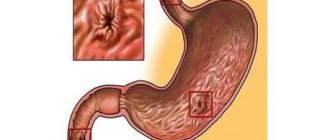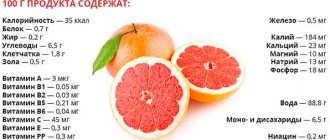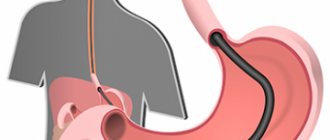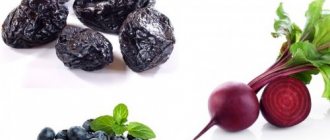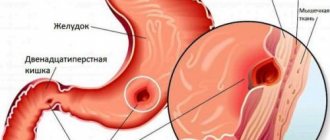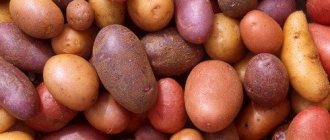There are three types of carbohydrates: fiber, glucose and starch. While many weight loss diets suggest limiting your intake of starches and other carbohydrates, researchers increasingly say this is nothing more than a myth. And with a properly thought-out diet, even starchy flour will not settle as fat on the sides. Doctors also had their say about this substance. Moreover, it is also ambiguous. So what is starch, what is the most popular - potato starch, the benefits and harms of which are topics of scientific debate?
Biochemical properties
Starch (formula - (C6H10O5)n) is a white granular organic substance that is produced by all green plants.
It is a tasteless powder, insoluble in cold water, alcohol and most other solvents. This substance belongs to the group of polysaccharides. The simplest form of starch is a linear polymer of amylose. The branched form is represented by amylopectin. In reaction with water it forms a paste. Hydrolysis of starch occurs in the presence of acids and increased temperature, resulting in the formation of glucose. Using iodine, it is easy to check that the hydrolysis reaction is complete (the blue color will no longer appear).
Content:
- Biochemical properties
- How it works in the human body
- Functions in the body
- Resistant starch
- Types of Resistant Starches
- Benefits and harm to the body
- Effect on sugar and metabolism
- Starch for weight loss
- How to get resistant starch
- Bad starches
- How many do you need?
- Starchy foods and fiber
- Food sources
- Characteristics of popular starchy foods
- Acrylamide in starchy foods
- Combination with other substances and absorption
- Industrial use
In green plants, starch is produced from excess glucose produced through photosynthesis. For plants, this substance serves as a source of energy. Starch in granular form is stored in chloroplasts. In some plants, the highest concentration of the substance is found in the roots and tubers, in others - in the stems and seeds. If the need arises, this substance can break down (under the influence of enzymes and water), creating glucose, which plants use as fuel. In the human body, as well as in the bodies of animals, the starch molecule also breaks down into sugars, and these also serve as a source of energy.
Face masks
A mask for dry skin has the ability to smooth out wrinkles and soothe the skin. Recipe: starch, milk and vegetable oil are mixed in equal proportions. Apply to the skin for 20 minutes, then wash off with water.
Application for lifting. Ingredients:
- starch - 1 tbsp. l.;
- sour cream – 1 tbsp. l.;
- carrot juice – 5 tbsp. l.;
- water – 500 ml.
All products are mixed, heated to a temperature of +40 ° C and applied to the face for 15-20 minutes, after which they are washed off with water.
Use for skin cleansing:
- Mix starch, soda and coffee grounds in equal proportions.
- The mask is rubbed into the skin for 3-5 minutes, after which it is washed off with water.
We recommend reading: Baking soda: beneficial properties, uses, how to take
How it works in the human body
Carbohydrates are the main source of fuel for our body. After the digestive system converts food into glucose, the body uses it to activate all cells and organs. The remains are stored in the liver and muscles. As a universal source of “fuel,” flour products containing starches and fiber are called carbohydrates that promote healthy digestion and control blood sugar. Such sources of carbohydrates break down more slowly than simple ones, providing long-term energy supplies and a feeling of fullness between meals.
Hair masks
Hair growth product. Ingredients:
- starch – 20 g;
- mustard – 40 g;
- shampoo – 10 ml;
- yeast granules – 20 g.
All ingredients are mixed and applied to hair for 10 minutes. Then wash off with warm water.
Anti-hair loss product:
- potato juice – 10 ml;
- starch – 40 g;
- olive oil – 20 ml.
The components are mixed and applied to the hair, after which a plastic cap is put on the head. The mixture is kept for 40 minutes, after which it is washed off with water.
Functions in the body
The only role of starch in the human diet is to be converted into glucose for additional energy.
This process begins the moment starchy food enters the oral cavity. At this stage, saliva surrounds the starch molecules, acting on them, so a breakdown product appears - maltose, a simpler carbohydrate. Then the new substance enters the small intestine, where it undergoes further transformations and turns into glucose. And only after this the body absorbs glucose (through the intestinal walls), the substance enters the blood and moves through the vessels throughout the body, supplying each cell with energy.
Meanwhile, the body is not able to use the entire portion of glucose obtained from starches in one “sitting”. The excess is stored as glycogen in the tissues of the liver and muscles. And when the body experiences a breakdown, glycogen comes to its aid.
Reviews
The successful use of starch in folk medicine and cosmetology is confirmed by numerous user reviews.
Veronica, 44 years old: “I came across an article and immediately remembered how my grandmother treated the wounds on my knees with starch pulp. The blood immediately stopped flowing. It’s a good remedy, you should take note of it.”
Natalya, 52 years old: “It would seem like ordinary starch, but no... For me, this is a super product with a lifting effect. I heard that with the help of this mask, Chinese women got a porcelain complexion. What I noted for myself: nourishes and tightens the skin, evens out the color. I am sharing the recipe for the perfect mask: starch, salt, milk and honey. Everything is in equal quantity. Use it, don’t thank me.”
Irina, 30 years old: “ I have been suffering from a stomach ulcer for three years. The doctor advised me to periodically take blue iodine at home. Let me warn you right away that this product is incompatible with medications. I use it as a preventive measure and am satisfied with the effect. Typically, exacerbation occurs in the fall and spring, but this spring I survived without a relapse.”
Resistant starch
Most carbohydrates consumed in food are starches. They are chains of glucose found in grains, potatoes and a variety of other foods. But the body is not able to digest all the starches that we eat. Sometimes a small portion of a starchy food passes through the digestive tract unchanged. In other words, this substance is resistant to digestion. Biologists call this type of starch resistant. And in the body it functions as soluble fiber. As many studies show, this particular type has a very positive effect on health. In particular, it improves insulin sensitivity, lowers blood sugar levels, reduces appetite, and this is not all the benefits of resistant starches for humans. Resistant starch also helps cleanse the body of “bad” cholesterol and reduces triglyceride levels.
Chemical properties and calorie content
- One of the properties of potato starch is its solubility in water. As a result, a colloidal solution is formed that looks like a paste. If acid is added to the finished composition, hydrolysis occurs. The composition changes as it “dissolves” (dextrins and glucose are formed).
- The compound can be distinguished using iodine, which, as a result of the reaction, gives a blue color.
- When heated to 200-250°C, it decomposes into polysaccharides.
Calorie content varies depending on the manufacturer. According to the USDA, it is 357 kcal. Some sources give a value of 313 kcal.
If you recalculate per 1 gram of starch, the figure will be 3.5-3.1 kcal.
Types of Resistant Starches
But not all resistant starches are created equal. There are 4 types of this substance:
- type 1 – found in grains, seeds, legumes;
- type 2 - found in some types of flour, raw potatoes and green bananas;
- Type 3 – Forms when starchy foods, including rice and potatoes, are boiled and then cooled.
- type 4 is the result of chemical reactions.
However, it is important to note that different types of starches can be found in the same food. For example, as bananas ripen, resistant starches turn into regular starches. The amount of stable substance in food is also affected by the method of its preparation.
Andrey Shulyak: Why is boiled starch dangerous? Investigation, part 1 - potatoes
Potatoes, in German “Kraft Teufel”, translated as “devilish power”, were brought to Russia from Europe (and they were brought from Peru) by Emperor Peter the Great and were eagerly planted among the peasants. The case was continued by Catherine the Great, then all the other kings joined in. But, as you will understand later, they did not achieve success. The Russian people did not like potatoes until the 20th century, until severe need forced them. And in Europe at that time they did not favor it - only among aristocrats in France it was customary to wear potato flowers as decoration.
Tsar Nicholas I, after a grain crop failure in 1839 and 1840 in several provinces, decreed by his highest command:
1) establish public potato crops in all state-owned villages to supply the peasants with the latter for future crops;
2) issue instructions on the cultivation, storage and consumption of potatoes;
3) reward owners who excel in potato cultivation with bonuses and other rewards.
The implementation of these measures was met with stubborn resistance from peasants in many places.
In Irbitsky and neighboring districts of the Perm province in 1842, a potato riot broke out, which was expressed in the beating of village authorities and demanded the introduction of military commands into the territory to pacify it. In one volost they were even forced to use buckshot.
And later people did not accept it as food - potato riots also occurred in 1873. Just imagine, just 150 years ago our ancestors fought with the authorities who demanded that potatoes be included in the daily diet.
In terms of the number of peasants who took part in the 1873 riot and the vastness of the area it covered, it was the largest of the Russian unrest of the 19th century, which entailed repressions that were unusual for that time in cruelty.
In his book “People and Positions,” Leonid Pasternak indirectly confirms this fact; he writes: “Mayakovsky began to be forcibly introduced, like potatoes under Catherine.” Shine!
In general, in the 19th century potatoes were not a popular folk dish. Pay attention to the food agenda of the sprees of merchants and industrialists in taverns and restaurants of the late 19th and early 20th centuries. Porridge, fish, meat, caviar, vegetables, fruits, rolls, pies, pies, soups, cabbage soup and so on in various variations. But, note, potatoes are not mentioned anywhere, even in the documentary books of Vladimir Gilyarovsky (Uncle Gilay), who describes the traditions, life and customs of Moscow in the second half of the 19th - early 20th centuries. You can read his “Moscow and Muscovites” and make sure.
Do you remember the description of potatoes as the main dish of Russian people by Pushkin or Tolstoy? I’ll answer in military terms: “No way! Everyone ate porridge!” Unfortunately, few people think about this, or even know about it. So I thought, and now you do too. It only takes two generations - and knowledge, if it is deliberately hidden, disappears irrevocably, and then it is manipulated. Great-grandfathers and great-grandmothers leave - that’s it, there’s no one else to tell.
Servants of the Russian Orthodox Church anathematized potatoes, dubbing them “the devil’s apple.” Russian Old Believers called potatoes a devilish temptation. It was very risky to write positively about potatoes in the press; you could get into trouble. Yes, potatoes are truly our Russian or Belarusian product, many argue. Only french fries from the States. I will continue to disappoint.
I will give you evidence of the absence of potatoes at the beginning of the twentieth century, in particular during the First World War. The website Oboznik.ru talks about the diet of the Russian army in 1914-1917.
Even Count Ignatiev A.A., who can hardly be accused of bias, writes in his memoirs about the time of his command of the 3rd squadron of the Life Guards Uhlan Regiment: ““Soup soup and porridge is our food,” said an old military saying. And indeed, in the tsarist army, lunch from these two dishes was prepared everywhere in an exemplary manner...
At the beginning of the twentieth century, an ordinary soldier in the Russian army was entitled to the following daily ration: 700 grams of rye crackers or a kilogram of rye bread, 100 grams of cereal (in the harsh conditions of Siberia - even 200 grams), 400 grams of fresh meat or 300 grams of canned meat (combat company per day Thus, it was necessary to deliver at least one bull, and a whole herd of hundreds of heads of cattle per year), 20 grams of butter or lard, 17 grams of flour, 6.4 grams of tea, 20 grams of sugar, 0.7 grams of pepper. Also per day, the soldier was entitled to approximately 250 grams of fresh or about 20 grams of dried vegetables (a mixture of cabbage, carrots, beets, turnips, onions, celery and parsley), which were mainly used in soup.
Let us remember that potatoes were not yet in the military diet in 1917.
Benefits and harm to the body
In the human body, resistant starch works like soluble fiber. It passes through the stomach and small intestine undigested, and in the intestines it serves as food for beneficial bacteria (intestinal flora). There are hundreds of types of bacteria that affect health, without some of them the body would not be able to function. And resistant starch feeds these microorganisms. As a result of this interaction, different types of useful compounds are formed - from gases to fatty acids, one of which is butyrate. Starch thus feeds beneficial bacteria and indirectly colon cells by increasing the amount of butyrate.
In addition, the resistant substance has several beneficial properties for the intestines. First, it lowers pH levels, reduces inflammation, and also reduces the risk of colon cancer. Because of its healing effects on the colon, starch may be beneficial for digestive disorders, including inflammatory bowel disease, Crohn's disease, constipation, diverticulosis and diarrhea. Research has also shown that resistant starch improves mineral absorption. Protects the body from toxic substances by preventing their absorption by the intestines.
But is resistant starch as beneficial as some researchers say? There is no clear answer to this question yet, as scientific experiments continue. And it is possible that all the hypothetical miracles of resistant starch may not be confirmed. But the fact that starch must be part of your diet is clear.
How to take: general rules for using juice
Freshly squeezed potato juice retains its beneficial properties only for 10–15 minutes, then the active substances oxidize and the liquid becomes a useless drink. After squeezing, you need to wait two or three minutes for the starchy sediment to settle at the bottom of the glass. Drink the juice through a straw, because it affects tooth enamel, or drink it as usual, simply rinsing your mouth with warm boiled water later. After taking it on an empty stomach, you need to lie down for 20–30 minutes, after half an hour you can prepare and eat a light breakfast (porridge or vegetable salad).
After drinking potato juice on an empty stomach, it is useful to have oatmeal for breakfast
In the first week of using potato juice, cleansing enemas should be performed in the evenings to relieve the intestines and improve the absorption of nutrients. It is important to follow a diet throughout the entire course of treatment: avoid meat and fatty foods, fried, spicy, salty foods, exclude carbohydrate foods, sweet pastries, and bread. During this period, it is recommended to eat more vegetables, raw or boiled, and fruits, trying not to choose high-calorie fruits that cause fermentation processes in the intestines.
In the intervals between courses, you should limit the consumption of alcohol and junk food, and avoid stressful situations.
Effect on sugar and metabolism
Resistant starch is important for healthy metabolism. Some studies have shown that this substance increases the body's sensitivity to insulin and is effective in reducing sugar after meals. In addition, it has another unique ability. If breakfast consisted of starchy foods, then this substance will prevent a spike in sugar levels after lunch.
The effect of starches on glucose and insulin metabolism continues to amaze researchers. Experience has shown that it is enough to take 15-30 g of the substance for 4 weeks to increase insulin sensitivity by 33-50 percent. Immunity to this hormone occurs in type 2 diabetes, obesity, cardiac disease and Alzheimer's disease. By increasing insulin sensitivity and lowering blood sugar levels, many chronic diseases can be avoided.
Meanwhile, researchers agree that the positive effects of resistant starches on the body depend on individual characteristics.
Causes of diarrhea
Starch can eliminate diarrhea.
In adults, diarrhea may have the following causes:
- infectious ones appear against the background of dysentery, salmonellosis;
- nutritional problems occur when there is a malnutrition and an allergic reaction to food;
- dyspeptic symptoms occur when secretion is impaired and food is not digested;
- toxic diarrhea occurs with arsenic and mercury poisoning;
- medicinal ones appear against the background of disturbances in the intestinal microflora;
- neurogenic are usually observed due to fright, fear, excitement.
In children, the main cause of diarrhea is rotavirus infection. For them, dehydration is dangerous and threatens the child’s life. You must immediately seek medical help.
As a rule, medications are prescribed to replenish the water and salt balance in the body. Recipes from our grandmothers are added to drug treatment, for example, treatment with starch, oak bark decoction and others. Everyone knows their effectiveness.
How to get resistant starch
Some foods in many people's traditional diets are sources of resistant starch. Among the most saturated are raw, boiled and then cooled potatoes, green bananas.
Another way to obtain this substance is ordinary potato flour, a tablespoon of which contains approximately 8 g of the resistant substance and has almost no carbohydrates, which means its calorie content is not dangerous even for those on a diet. Potato starch can be added to prepared foods and mixed with drinks. But you should not exceed 50 grams per day, as flatulence and stomach discomfort are possible. The “starchization” program can last about 2-4 weeks.
Sources of resistant starch include bananas, corn, potatoes, sweet potatoes, pearl barley, oatmeal, lentils, and brown rice.
The process of transformation of ordinary starch into resistant starch directly depends on temperature exposure. And what’s interesting is that hot starchy dishes contain more of the usual substance, while chilled ones contain more of the resistant substance. This means that if you are worried about your figure, you don’t have to eat mashed potatoes, but indulge in potato salad without remorse.
And there are some interesting numbers on this matter. Chilled potatoes contain slightly more than 3% resistant starch, which is 4 times less than regular potatoes. Lentils are 75% starch, but the amount of resistant starch no longer exceeds 25%.
Recipes with potatoes
Potato juice is very popular among healers. It perfectly relieves stomach pain and relieves heartburn. The folk medicine is used for the first 10 days, 100 ml, divided into 2 doses, always on an empty stomach, after which a break is taken for 1/3 of a month and treatment is resumed. A total of 3 courses are required. However, before starting therapy for gastritis with potato juice, you need to prepare the body, and for this, 3-4 days before the start of treatment, you should stop eating meat and fish, and fill your diet with fresh vegetables, nuts, and fruits.
In tandem with flaxseed, the product works much better.
Potato starch will be incredibly useful for gastritis if you combine it with other products, for example, flax seeds, which help remove toxic substances from the body, relieve heaviness in the stomach and improve peristalsis. Representatives of alternative medicine recommend drinking jelly prepared according to the following recipe:
- Grind a tablespoon of flax seeds and add 1 liter of boiled water.
- Leave to infuse for 12 hours.
- Place on fire and bring to a boil.
- Add half tbsp. l. starch, previously diluted with water.
- Cook until thickened, then remove from heat and cool.
- Use as breakfast.
Milk jelly can improve the functioning of the gastrointestinal tract and saturate the body with useful substances. It is not difficult to prepare, just boil 300 ml of milk, then add 30 g of starch diluted with water and boil the jelly for 5 minutes. You can drink 200 ml of this drink every day for a month.
Only fresh potatoes are allowed to be used as part of the complex treatment of gastritis, so that they do not have time to lose their value.
Bad starches
This may seem strange, but not all starchy foods can serve as sources of starches for humans. This primarily applies to white flour and instant rice. As a result of mechanical processing, these products lose a significant amount of nutrients, including starch. Nutritionists advise avoiding these types of foods, because not only are they not beneficial, but they can also cause health problems. Also, don’t look at cakes, cookies, pretzels and cornflakes – you definitely won’t find healthy starches in these products.
Story
In 2012, starch production worldwide was approximately 75 million tons. The main plant starches are obtained from wheat, corn, cassava and, finally, potatoes. These starches have similarities and differences in their chemical composition and nutrient content (9).
In addition to matzah (in Jewish culture), which is prepared according to strict rules, prohibited ingredients during Passover include: wheat, barley, rye, oats and spelled. Cornstarch is not considered kosher, so it is also not allowed. So, what ingredient is commonly used in baking for the Jewish holiday of Passover? The answer is potato starch (10).
If you read ingredient labels carefully, you may be surprised to see potato starch or potato flour in the following (11):
- baked goods such as muffins
- bread
- candies
- canned soups
- sauces
- salad dressings
- grated cheese
- spicy mixtures
- various packaged food products
How many do you need?
In order to satisfy the body's daily needs for a starch product, it is enough to consume 100 g of whole grains. This is an indicator for women. For men, it is advisable to increase the portion to 120-130 g. In general, carbohydrates should make up approximately 45-65 percent of the daily diet.
In order to get enough of the substance, about a third of the diet should be foods containing this substance. Meanwhile, these indicators may change, for example, during illness.
Doctors say that adults need 300-450 g of starch daily. But its use is justified only on the eve of heavy physical activity or before frequent meals are impossible. Smaller portions are also beneficial - they protect the stomach walls from digestive acid. But excessive consumption of this substance can cause constipation and the formation of fecal stones.
Useful tips
First of all, you should know that it should be stored in bags without access to moisture. In dry, warm rooms it can lie for 2 years without losing its properties. The following tips will be useful in the household:
- For baking, potato starch can be replaced with semolina or flour.
- Wallpaper glue can be prepared from a mixture of starch and flour, which is taken in the amount of 100 g per 1 liter of water.
The widespread use of starch is due to its chemical composition. This carbohydrate can be used in everyday life, cooking and cosmetology. In addition, it is popular in medicine due to its ability to improve many processes in the body.
Food sources
Starchy foods are the main source of carbohydrates and are important for maintaining a healthy diet. Products such as potatoes, bread, rice, pasta, and cereals, according to the advice of nutritionists, should make up a little more than a third of all food. Most of them contain fiber, calcium, iron and many vitamins.
Products high in starch are primarily legumes (beans, lentils), vegetables (potatoes, zucchini), nuts, cereals and flour made from them.
Whole foods rich in starch are also sources of fiber, vitamins and many minerals.
There are several starch-rich sources that you can include in your daily diet. Starchy vegetables such as potatoes, corn, peas, and zucchini contain fairly high levels of the substance. Whole grain bread, dark rice, and pasta are also important sources. A serving of flour food can provide the body with 15 grams of starch.
What does it contain?
Lentils are rich in this substance.
High starch content is found in foods such as:
- lentils;
- potato;
- peas;
- corn;
- beans;
- sweet potato;
- buckwheat;
- soy;
- rice.
Smaller amounts of the polysaccharide are present in eggplants, beets, carrots, zucchini and turnips. It should be noted that this carbohydrate has a different rate of absorption, which depends on the method of processing and preparing food from starchy foods. Therefore, in order for starch to provide exceptional benefits for patients with gastritis, it is important to use it correctly.
Characteristics of popular starchy foods
Bread
Especially healthy - made from wholemeal and rye flour. Both options contain B vitamins, fiber, and a wide range of beneficial minerals. White bread also contains many nutrients that the body needs, but the amount of fiber in this product is much lower.
Some people refuse baked goods for fear of gaining extra pounds. Meanwhile, you cannot completely cross out this product from your menu, since along with it a person deprives himself of many useful elements.
By the way, only fresh bread that is stored at room temperature is healthy.
Cereals
Whole grain cereals are a storehouse of iron, fiber, proteins, and B vitamins. Among the most healthy are cereals made from oats, barley, and rye. Cereal products are an excellent option for preparing a nutritious and healthy breakfast. In addition, do not forget about barley, corn and other grains, which are also considered important for the body.
Rice
Rice and rice-based foods are an excellent choice among starchy options. This cereal will provide energy and contains virtually no fat.
There are different varieties of rice, and all of them are beneficial for humans, as they contain vitamins, fiber and protein. This product can be consumed both as hot dishes and cold snacks. But in order for it to be truly healthy, it is better not to reheat the prepared dish, and if necessary, store it in the refrigerator between reheatings, which will protect against the proliferation of harmful bacteria. But under any circumstances, the finished rice dish cannot be stored for longer than 24 hours. And during reheating, keep it at a temperature of about 70 degrees Celsius for 2 minutes (possibly over steam).
Pasta
It is better to give preference to dough made from durum wheat and water.
It contains iron and B vitamins. Whole grain pasta is even healthier. Table of starch content in products
| Product | Starch (percentage) |
| Rice | 78 |
| Spaghetti | 75 |
| Cornflakes | 74 |
| Flour (wheat, barley) | 72 |
| Millet | 69 |
| Fresh bread | 66 |
| Corn | 65 |
| Noodles | 65 |
| Buckwheat | 64 |
| Wheat | 60 |
| Rye | 54 |
| Potato chips | 53 |
| Peas | 45 |
| Rye bread | 45 |
| Puff pastry | 37 |
| French fries | 35 |
| Raw potatoes | 15,4 |
| Boiled potatoes | 14 |
Use of potato starch in cooking
Due to its properties, it is used for preparing jelly, baked goods, and meat dishes. Various sauces are also made based on it.
How and where is it used?
For culinary recipes, a dry composition is more often used when preparing dough or minced meat. For jelly and sauces, it is necessary to dilute starch in water and then add it to the main mass.
Popular recipes
Popular recipes include pancakes, cookies, and cutlets.
Pancakes
Using potato starch for pancakes, thin, tender pancakes are obtained. The advantage of the recipe is that it requires less dough when compared to baking using the classical method.
Cooking technology:
- Add 60 g of starch to 100 g of flour and mix.
- Add 40 g sugar and 0.5 tsp salt.
- Pour 0.5 liters of heated milk into the mixture and stir.
- Break 4 eggs and bring the mixture until smooth.
Leave the dough for 25 minutes, then add 3 tablespoons of vegetable oil and you can bake pancakes.
Chicken cutlets
Potato starch is often used in nutrition when it is necessary to add carbohydrates and proteins to the diet. Therefore, chopped chicken cutlets are suitable for everyone. Recipe:
- Grind 500 g chicken fillet.
- Add spices, dill, garlic and 2 eggs.
- Squeeze 3 tbsp mayonnaise into the mixed mixture. spoons.
- Add 3 tbsp. spoons of starch.
- Leave the prepared minced meat for 40 minutes.
Spread the finished mixture with a spoon and fry for 7-10 minutes on each side.
Shortbread
Starch in baked goods gives airiness to the dough, which is why it is used for shortbread cookies. You will need:
- Butter 250 g.
- Vegetable oil 0.1 l.
- Wheat flour 2 cups.
- Potato starch 4 tbsp.
- Powdered sugar 200 g.
- Vanillin 1 g.
Mix softened butter with starch, 100 g of powdered sugar (powdered sugar can be replaced with regular sugar). Pour in vegetable oil and mix again. Gradually add sifted flour and vanilla. Place the finished dough in the refrigerator for 30 minutes. After this, divide into lumps and form into bars, from which squares measuring 2x2 cm are cut.
The cookies placed on a baking sheet are baked for half an hour at 150°C. Then roll in the remaining 100 g of powdered sugar.
Acrylamide in starchy foods
Acrylamide is a chemical that can be found in some flour products after frying, grilling, or heating at very high temperatures.
Some studies have shown that this substance may be dangerous to humans. Therefore, nutritionists are against frying (and especially burning) starchy foods such as potatoes, croutons, and root vegetables.
Acrylamide is practically not produced during cooking, steaming or microwave baking. And by the way, storing potatoes at very low temperatures increases the concentration of sugar in their composition, which also contributes to the release of a large portion of acrylamide during cooking.

